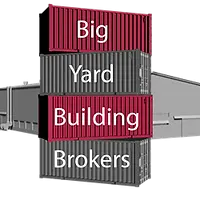https://www.wsj.com/articles/what-wall-streets-top-recession-gauge-is-saying-now-67232353
Wall Street is growing confident the U.S. can avoid a recession. But one key market indicator is still sending seemingly bleak signals.
Right now, yields on longer-term U.S. Treasurys remain far below those of shorter-term bonds, an anomaly known as an inverted yield curve that has earned fame as a harbinger of downturns.
That has left many investors questioning what the inversion means now. Here is a look at the possible answers:
The basics
A yield curve shows the annualized percentage return, or yield, that investors can get on Treasurys, from the three-month bill to the 30-year bond, if held to maturity.
Yields largely reflect investors’ expectations for what short-term interest rates set by the Federal Reserve will average over the life of a bond—often plus a little extra for the risk of holding bonds for longer.
A warning signal
Inverted yield curves have taken on almost mythical status on Wall Street because of their recession-predicting track record. One popular measure is the gap between yields on 10-year and 2-year notes, known as the 2-10 spread.
Can this time be different?
The simplest message sent by inverted yield curves is that investors think that short-term interest rates will be lower in the future than they are now. But that doesn’t mean that a recession is guaranteed.
There have, in fact, been times when the Fed first raised, then lowered, rates and managed to skirt a recession. That might have even happened after it cut rates in 2019, if not for the pandemic.
Investors and economists have become more optimistic in recent months because inflation has subsided even as unemployment has remained near a five-decade low. That is true even of the Fed’s preferred inflation gauge, which strips out volatile food and energy categories:
As the Fed sees it, short-term rates, adjusted for short-term inflation expectations, are currently above a so-called neutral level and therefore working to push inflation down.
Notably, bond yields and Fed forecasts both suggest that real rates will fall gradually over years before leveling off, a sign that investors and officials don’t foresee a sharp economic downturn. Fed officials have also said that they might cut rates partly just to offset falling inflation, which would drive up real rates if they didn’t take any action.
Projected real fed-funds rate
What to watch for
The economy doesn’t typically enter a recession when the yield curve is inverted. Rather, the curve uninverts shortly before a recession, with short-term bond yields falling because the Fed is cutting rates or is on the verge of doing so.
Analysts call this a “bull steepening” because bond prices are rallying, causing yields to fall, while the curve is getting steeper or uninverting.
Recently, though, the bond market experienced a “bear steepening,” in which longer-term yields rose sharply but short-term yields edged only slightly higher.
The curve was becoming less inverted but not in the normal way: Investors were growing more optimistic about the economy and scaling back bets on interest-rate cuts.
Going forward, analysts see a decent chance that the yield curve could stay inverted longer than normal, given the unusually large yield-gap and the strength of the economy. But the inversion will end eventually and how it ends will be telling—whether the main cause is falling interest rates or new bets that the economy can withstand higher rates than previously believed.







